This story is part of our annual Fit At Any Age series—a guide to the innovations and breakthroughs in aging to help you live a stronger, longer life.
SUPERFOODS ARE, at their core, a bizarre notion. For roughly 200,000 years, normal, whole foods served as mankind’s primary source of energy—and did a very good job of it. But during the Post-Industrial Era, some enterprising capitalist out there apparently said to his customers, This cereal also promotes brain growth! And thus we entered an age of cleverly branded mutant foods that blur the line between supplement and meal and are engineered to give you powers that a simple potato never could. You could eat all of these vegetable-infused pastas, probiotic soft drinks, and protein bars and then bench-press your way to immortality. Who could resist such an idea?
Turns out, not many of us. Revenue in the category of “functional foods”—that’s the industry term for these products—is expected to rise by 8.5 percent every year between 2022 and 2030. By 2030, that market segment is projected to gross $586 billion. That’s a faster rate of growth than you’d find at the beginning of a Pornhub clip, and it’s the result of our Big Food overlords noting Americans’ increasing aversion to outright junk food. Selling functional foods as an alternative has helped keep their revenue up, and many of these products do indeed contain some healthy ingredients: chia seeds, flaxseeds, nuts, spelt, and what have you.
But exactly how functional are they? What can they do for me, a regular middle-aged man who’s historically been fond of nutritional shortcuts? I’m a guy who ate Olestra potato chips and liked them, despite knowing exactly what they would do to my body. (A warning label on Olestra products noted that consuming the fat substitute might cause “abdominal cramping and loose stools.” It was certainly accurate on the latter.) So perhaps these functional foods can serve me, and my rectum, even better than those chips could. What’s the possible downside?
Sure, I am a surprisingly healthy man in many respects. I eat balanced meals. I work out daily: one to two hours on my bike, plus three sets of 30 pushups. I even started counting calories in the summer of 2022, to drop a few pounds and to keep my brain from screaming I need some fucking guac every ten minutes. But maybe I’m not truly optimizing my inner workings. Maybe I’m a sucker for remaining, of my own volition, merely human. Maybe there’s an even better, more vigorous incarnation of myself to evolve into: one powered exclusively by adaptogens and probiotics and able to leap over cars by harnessing the power of sprouted buckwheat. Can I become that man? Can I become SuperDrew?
There’s only one way to find out. I’m gonna have to eat all of this new, weird shit.
So I’ve decided to go on a 30-day diet of functional foods to see what they’ll do for—or, perhaps more accurately, to—my body. I’ll become a midlife silver-bullet hunter, gobbling up anything that can potentially offer me a dietary edge. I will monitor my weight, my mood, my blood pressure, my poop, and my energy reserves, and I will get my blood drawn both before and after the diet. Technicians will use these blood samples to check my body’s vitamin levels, and that way I’ll know if these products have made a quantitative difference in how my body operates. So let’s see what happens! Exciting!
I START OFF weighing 214 pounds. I’m six-foot-three, so I wear this weight fairly well. My blood pressure is 120/79, which is jussst below the you should be worried level. My blood work reveals that only my vitamin D level is low. Turns out the only “super” food I’ve been in need of this whole time is sunlight. I am a houseplant that someone left in a closet. But I commence my new regimen regardless.
If you’re unfamiliar with these products, don’t worry. Many of the ones I’m about to describe taste exactly the way you think they might. For example, I start off my new superlife by eating a peanut butter “field bar,” whose website promises it’ll “provide a reliable source of energy,” a promise that any normal breakfast surely can’t fulfill. This is the driest food I’ve ever eaten. I feel like a Marine still stuck in Basra. Later, for a snack, I eat Quest protein chips, which claim to “work for you, not against you.” They taste acceptable, but nowhere close to what a snack ought to taste like (Doritos). Then I drink a ketone-supplement mix called Ketone-IQ that tastes like something you drink to prep for a colonoscopy. Already I have regrets about this diet. The labeling on the Ketone-IQ, as with everything I’ve consumed so far, is so general as to be duplicitous: “Ketones are nature’s superfuel, proven to support energy, focus, endurance, and more.”
Notice a trend in these brand promises yet? Notice how they tend to lack specificity? My smoothie made a point of touting star ingredients like MCT oil, something called “maca,” and probiotics on the front of its label but offered only vague platitudes on the back. If you think that’s all by design, you are correct. Lindsay Moyer, R.D.N., a senior nutritionist at the Center for Science in the Public Interest, a nutrition advocacy group, has spent part of her career battling empty promises like this. “I can’t even count the number of bars, chips, and other processed snack foods out there that have a little tiny bit of a superfood tossed in,” she says. “All it takes is a little chia, a little quinoa, a little amaranth and it’s plastered on the front of the label. It’s a cheap, cost-effective way to make your product stand out.”
At 46, it’s harder for me to stand out from many of the more youthful, more vigorous Americans out there. So you understand why seeing adaptogens in bold font on any package might pique my interest. At my age, working out and eating right are largely a matter of upkeep: making sure that I feel good and that I don’t grow tits that drop to my knees. But sometimes I feel a touch more ambitious than that. I still want to look good, and young, and cut (but not too cut, because jacked old guys are weird). The superfood market is designed specifically to exploit that opening in my psyche, and it’s good at doing so. Because deep down, I’d like to believe that some of these products can actually work.
To achieve a new baseline of superpowered nutrition, I start a regimen of Athletic Greens. The company made a name for itself early in 2022 when it received $115 million in venture-capital funding. In the glass, AG is a drink mix made from powdered wheatgrass, alfalfa, rose hips, beets, spinach, carrots, and slippery elm: the most suspicious of all elms. I swallow down my serving and try not to think about it, but the aftertaste forces me to. Everything in this genre of food has an aftertaste. Everything tastes like it has something to hide. Ah, but that shitty aftertaste lets me know that this is no ordinary food I’m eating.
So I figure I should keep up the momentum and have all of the magical aftertastes: hydration and collagen mixes to “support joint health,” probiotic sodas to boost my gut health, “forest juice,” which sounds like an Urban Dictionary entry but is just maple syrup infused with nonpsychedelic mushrooms that may still “balance the mind, body, and spirit.” (Mushrooms are a theme in a lot of these products.) And then, to top it off, I indulge in the fabled whey-protein shake, which is still sold as beefcake fuel at your local GNC but is also now pitched as another invaluable superfood that enhances mindfulness and wellness. This shake mix is called Gnarly, presumably because that’s how my farts will smell an hour from now. It has chocolate whey grass-fed protein and tastes like classy sawdust. Surely that means I’ll only grow more powerful and sexy.
I wake up each day feeling like myself. I am not sharper. I am not more vigorous. If anything, I feel enervated because I know I have to eat more of this crap. All of these supplements promise to either relax you or boost your energy and keep you strong and alert. It’s like they engineered a recipe to give you bipolarity. I’m lacing my morning coffee with superfood creamers that have been made with fancy mushroom dust. But I cannot suddenly do triple the pushups I once did. In fact, I feel very tired every midday. Woozy, like I’m muscling past the mild side effects of a prescription drug.
I’m only a week into this new lifestyle, though. Any new health regimen is going to have an adjustment period. If I stick with the diet, perhaps all the bad aftertastes will fade and I’ll find myself turbocharged and ready to kill.
EVER SINCE the advent of Carnation Instant Breakfast, our industrial masters have been searching for a substantive foodstuff that requires no cooking, cleaning, sitting, or even chewing. To that end, here I am sucking down a superfood smoothie that comes in a little pouch with a screw top, like those GoGo SqueeZes of applesauce I used to give my kids back when they had no teeth. This is dystopian food in friendly packaging—the kinda shit they feed the space prisoners on Andor—but it tastes good and sweet. No aftertaste.
I offer a taste/sip/suck(?) to my wife, who says, “This is for lazy adults. Lazy, busy, too important.” Hey, that’s me! I am lazy but also busy. And I love to make myself feel important. No wonder I liked that sauce pack so much. Other products I try are also designed to make me feel smarter just for buying them, like “brain butter,” which is just peanut butter with omega-3’s and added choline (not chlorine) and real sugar. The sugar is a blessing because many of these products are sweetened with stevia. I now appreciate real food even more than I did before.
I grow out of my first-week wooziness and settle into a superfood groove, feeling up at the right times and low at the right times as well. I make an effort to taste my Athletic Greens rather than suck them down fast as I can. And you know what? I like them. I even promote them to a spot in my sports bottle. It makes me feel like an athlete who’s living the veg. I feel vital, powerful, sexy, and rich.
Turns out I’d better be rich, because a single bag of Athletic Greens, which lasts 30 days, costs $100 without a subscription. No wonder Silicon Valley is so fond of them. A CBD cocoa that I vaguely enjoyed and that made me relaxed (thanks to the fact that it also included melatonin) was $95. Ten single-serving packets of brain butter? $17. Clearly, not everyone can afford this stuff. So perhaps this is a case of affluent people inventing supernutrition as a way of turning themselves into an entirely different species.
To ease the strain on my wallet, I try a new superfood coffee that is, blessedly, just $16 a bag. It’s called Perform, which sounds like it cures ED but actually contains “three amplifying ingredients—coffee bean extract, L-theanine, and Cordyceps mushrooms—to fuel your body and mind through your busiest days.” Something tells me the extra caffeine in this coffee is doing the bulk of that fueling. Again, the mushrooms do not make me see invisible desert animals, which is a letdown. But maybe if I keep on this regimen, I’ll see the future, and it’ll be all cool and on point and handsome.
These superliquids claim to improve other things, too. I drink a can of alcohol-extracted kombucha, meant to serve as a “digestive aid” (your digestive system likely already does fine), containing elderberries, which the can says “have long been studied for their immune-boosting effects.” What the can doesn’t say is what conclusions those studies produced, so I ask nutritionist and author Abby Langer, R.D., about these elderberries. Just saying the word elderberries out loud is enough for Langer to let out an exasperated “Oh my God,” followed by “There are really weak studies behind its effects on the immune system. Animal studies. Not a lot of research behind it. So take it, but absolutely not a substitute for vaccinations.”
Noted. But hey, at least I can discern which of these functional foods are enjoyable and which are clearly not worth it. The ’bucha is worth it. The chickpea pasta I try is not. Neither is the Salud energy-drink mix that I down one morning instead of coffee to get “an optimal brain boost without the energy spikes, jitters, or crash.” Later on in the week, I blow up at my PC when it updates too slowly and then get into an argument with my wife that ends with her telling me, point-blank, “You’re being an asshole.” So maybe my brain is not yet optimally boosted.
BUT DO I smell good, at least? I’m still scarred by my brother’s farts from when he used whey-protein supplements as a teenager. Smelled like someone napalmed a salad-dressing factory. So I have some concern over how this diet is affecting my overall musk. My wife tells me that my poops still smell the same, but “that may not be the health benefit that you want.”
In every other regard, I’ve become attuned enough to myself to realize that these functional foods aren’t changing me in any way, really. The CBD does nothing. Elderberries are a scam. And the self-image boost I got from the Athletic Greens was almost certainly psychosomatic, the same way you get an ego boost from riding around in a Porsche or some other midlife-crisis car. Langer, for her part, doesn’t believe in the idea of superfoods whatsoever: “It’s 100 percent a marketing gimmick. There’s no such thing as a superfood, really. The reality of the situation is that no one food is going to have a significant impact on your health, positive or negative. It’s the overall quality of your diet.”
I’d already gotten my dietary affairs in order prior to this experiment, mind you. I had trained myself to count calories, to eat fewer processed foods, and to avoid eating just to eat. The results were right there in the mirror for me to see, and they required very little in the way of epicurean sacrifice. I still enjoyed everything I ate, and I learned to make the times I ate count, both on my tongue and in my system. More to the point, I was happy. A label can promise that a functional food will do all that legwork for you, but it really can’t. You still have to be in charge of you. And so I quietly begin to rebel against my diet, because these superfoods are forcing me to use calories on random garbage instead of food that I love. These brands all promise enhanced mindfulness. They all wanna be your confidant, and they all have a story to tell you that reads like an overly verbose Christmas card from a relative you can’t stand.
I try a packet of seed clusters from a company called Clusterbucks, founded by a woman who has her own brand story about falling in love with “sprouted buckwheat,” which sounds like buckwheat that’s going through puberty. These clusters promise high fiber (I already take Citrucel for that) and “rutin, a heart-healthy antioxidant.” But they taste awful. So much ’80s-rice-cake energy. I could have eaten a chicken drumstick with these calories, lady. I would’ve been better off, too. I don’t need these functional foods to be healthier, stronger, or wiser. I already am all three of those things. So as far as I’m concerned, this diet is now my enemy. And I will defeat it.
I’M SICK OF being obligated to eat this food, so I cheat a little. I snack more than I have all year, creeping over my calorie budget just so I can get more real food into my hungering maw. It’s what I deserve after eating all this fucking buckwheat.
But the superfood-industrial complex isn’t quite done with me yet. A shipment of supercereals arrives at my doorstep. They are vegan and gluten-free, and the side of the box vaguely encourages me to “break the rules.” All of these cereals taste stale on arrival. None of them taste fun. None of them leave a tasty bowl of cereal milk behind. My 16-year-old daughter wants to try the coffee one because it’s made with coffee from her favorite podcaster, Emma Chamberlain. Her verdict?
“It’s good, but something’s up.”
It sure is, girl.
She goes on. “These superfoods aren’t worth it, because they’re too expensive and they taste like butt.”
For the final push, I binge every superfood left in my arsenal, including turmeric smoothies, a homemade apple crisp I doctor with protein-infused granola in the crumble, and a cold-brew keto drink from my new brand friend “Cindy.” None of them are worth my time. I also try a “nutter bar blast” whey-protein powder. The website promises that this blast will give me “improved recovery and muscle protein synthesis necessary to build lean muscle.” But I don’t give a damn about any of that. All I know is that this shake tastes incredible. Like a real peanut butter shake, but about 800 calories less on the budget. I love it. 10/10. The full jug retails for “only” $45, and I hit purchase right away. I decide I’m only gonna buy functional foods if I want them and not if I need them. Because I don’t need them.
If you’re an otherwise healthy adult, you don’t need them, either. Moyer details how the functional-food industry has built a new empire atop a pile of selective truths and outright snake-oil peddling. “There are so many foods that should be the core of our diet: whole fruits, vegetables, whole grains, nuts, seeds, beans, lentils,” she says. “Those foods are all super. But there’s often not good evidence to highlight specific superfoods. That is where marketing comes in: to sell a packaged food that has a little bit of this superfood added to it, or because there are a number of industry-funded studies that make a particular food look good. And that pays off for them.”
For you and me, that payoff is lower, if it even exists at all.
Finally, my 30 days are over, and the most vital thing I learned in this whole experiment is that I’m entitled to nice foods, as we all are. The twist is that we, as Americans, are constantly redefining what those nice foods are. Before this diet, I already bought omega-3 eggs. And oat milk. And protein-infused waffles for my kids. My family is part of the growing nutritional awareness of the entire country. But these evolved groceries are all relatively affordable, and they either work just as well as their pricier equivalents or they offer the same illusion that they’re alchemizing your skeleton into 24-karat adamantium.
The reality is there’s really only one legal supplement proven (in the early 1900s) to give you an energy boost, and that’s caffeine. Otherwise, efficiency isn’t in a product. Believing it might be is like hoping a new set of golf clubs will make you a better golfer. And if you are eating to maximize your efficiency, it’s worth asking who you’re becoming more efficient for. Is it really for you?
So I end my journey devoid of faith in superfoods but still open to welcoming them into my diet, so long as they pass the taste test, as the nutter bar blast does. As for my body, it is now part of the scientific case against myriad superfood claims. Here’s the data to prove it: I step on the scale the morning after my regimen ends and weigh in at 215.6 pounds. A pound heavier than when I started. My blood pressure is 116/88, nearly the same as before. And my after-diet blood work says that my vitamin D level actually decreased over the 30 days. The diet did nothing, and do you know why? Because food was never meant to do all this shit.
Food was only meant to be food, and that’s more than enough.
This story appears in the April 2023 issue of Men’s Health.

Drew Magary is a columnist for Defector and SFGate. His new memoir, The Night the Lights Went Out: A Memoir of Life After Brain Damage, is available now.


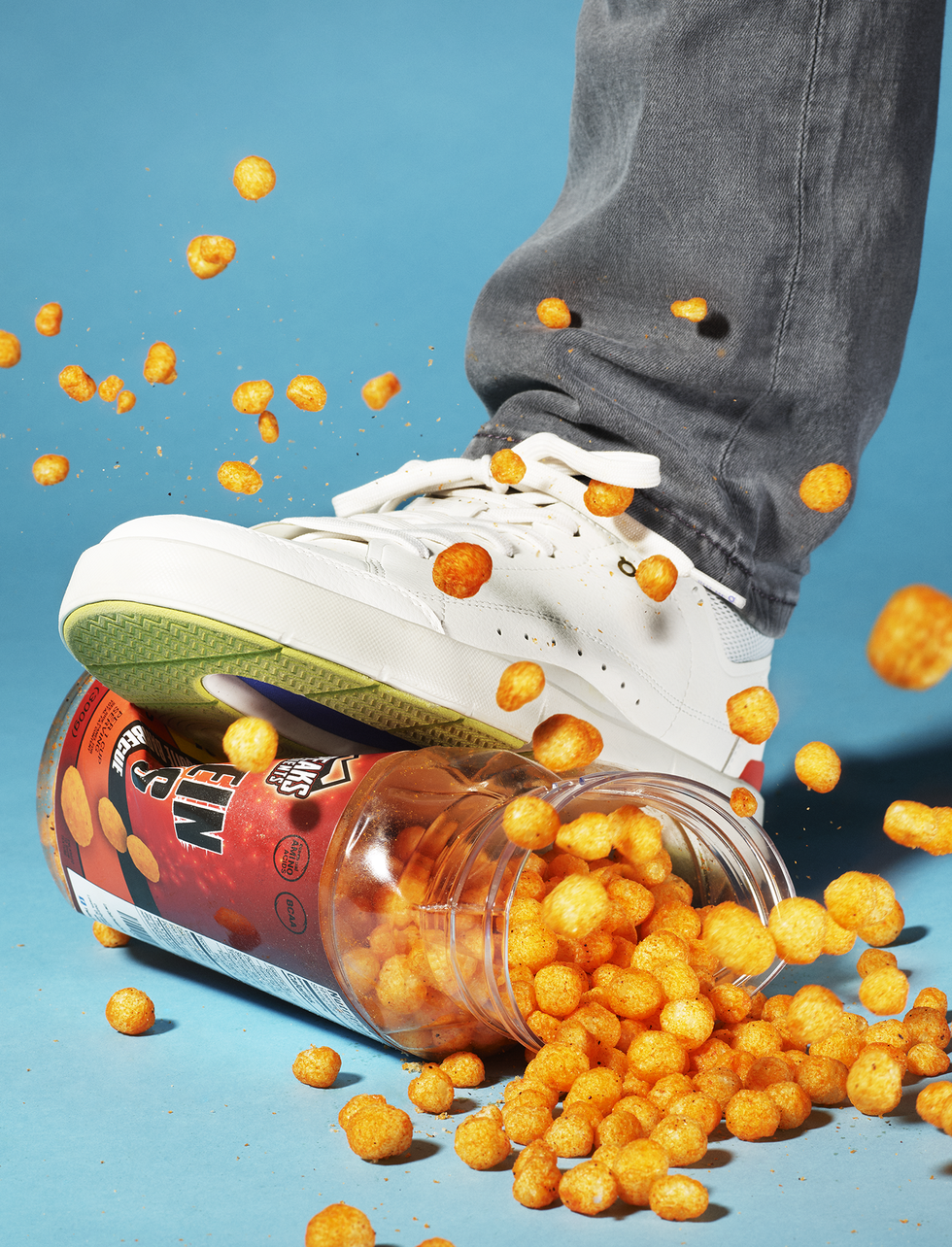


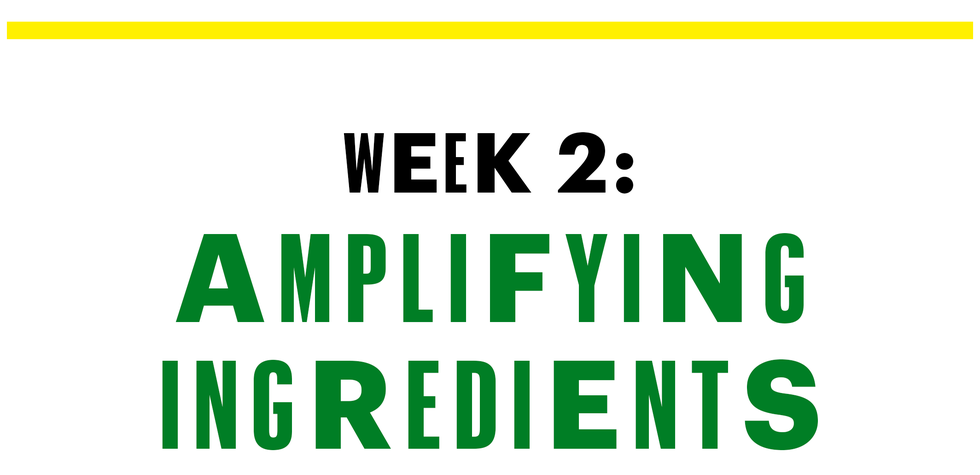
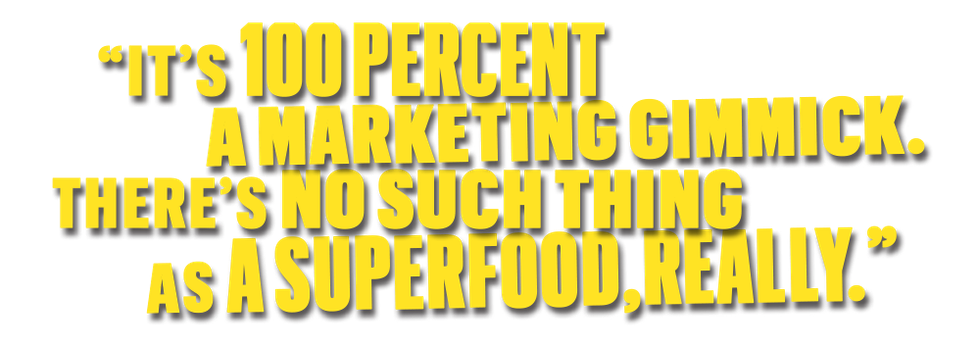
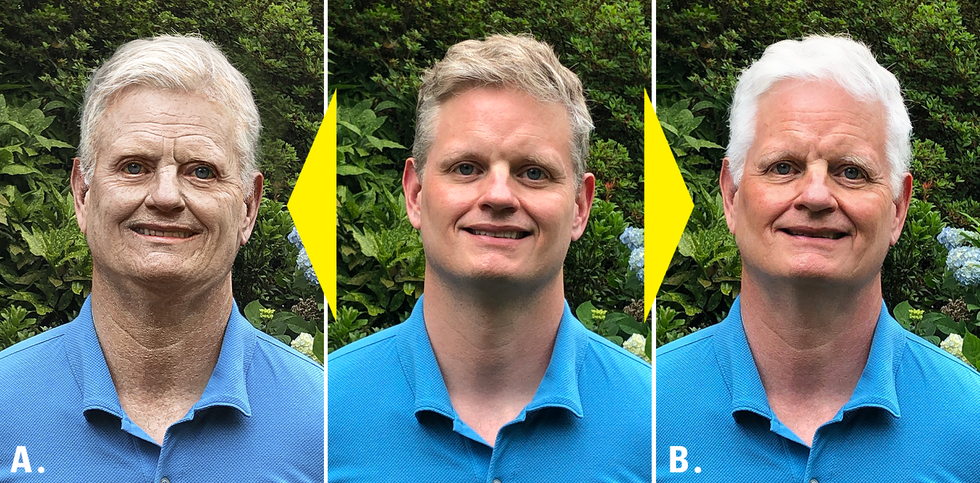

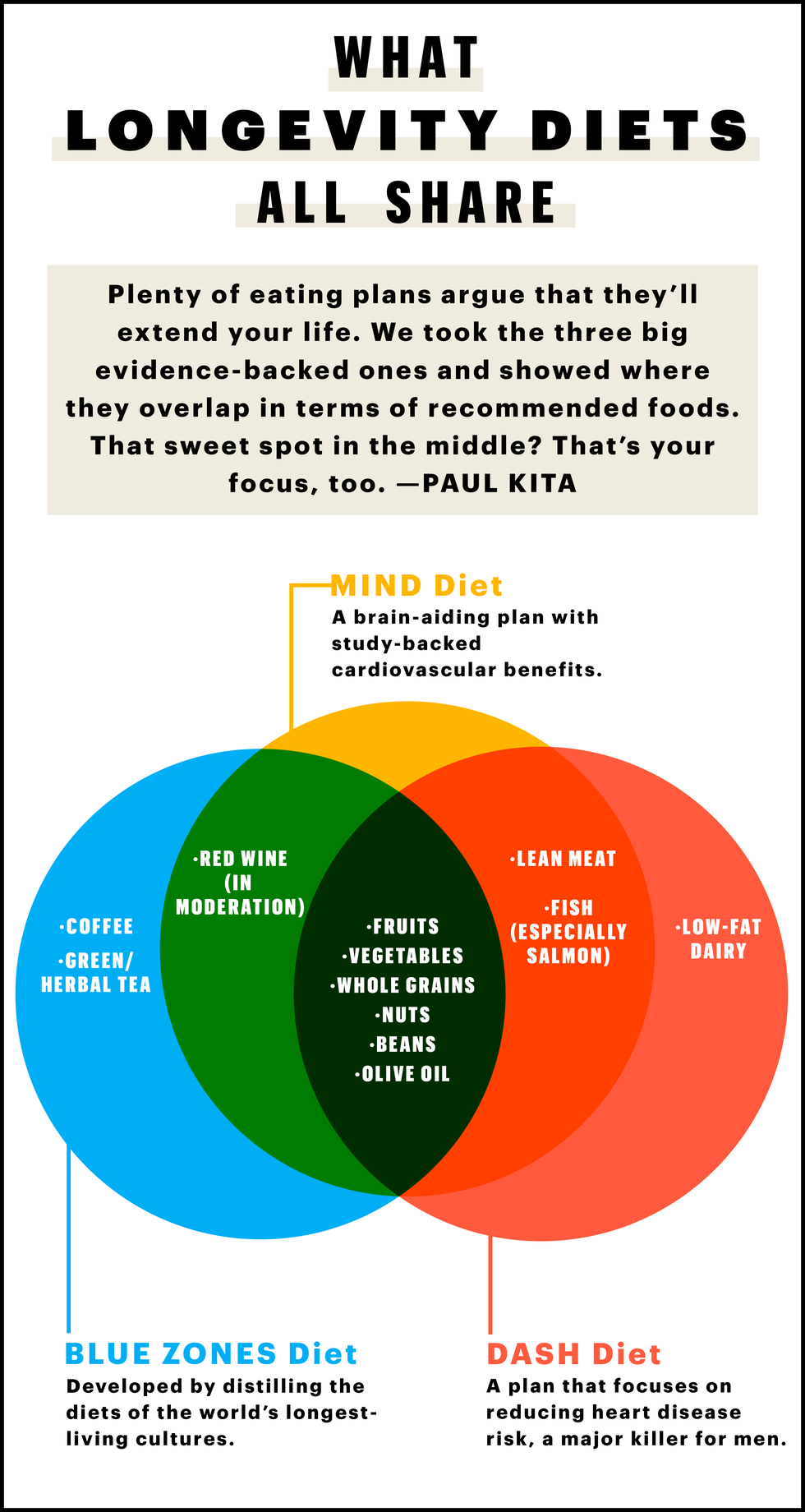


Comments are closed.